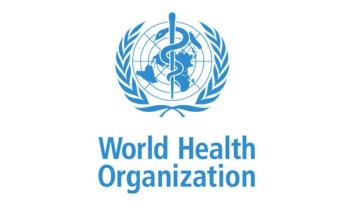
How Clinical Labs Help Detect Outbreaks and Prevent Infectious Diseases
Pathologist Leilani Valdes, MD, MBA, FCAP, explains the role of PCR testing, early surveillance, and vaccine education in protecting community health.
As respiratory and gastrointestinal viruses begin to rise during the fall and winter months, the role of clinical laboratories in public health becomes increasingly vital. Leilani Valdes, MD, MBA, FCAP, medical director of Regional Pathology Associates and chair of pathology and laboratory medicine at Citizens Medical Center in Victoria, Texas, offers a firsthand look at how local labs serve as both early warning systems and community health partners.
The Role of the Lab in Early Outbreak Detection
Clinical laboratories, particularly those embedded in community hospital systems like Valdes’s, are essential in identifying outbreaks before they grow into public health crises. "Clinical laboratories, especially practices like mine that are embedded in community hospital systems, play a critical role in early outbreak detection," she said.
This detection begins with advanced testing tools, including PCR tests and multiplex panels that can detect several pathogens at once. Valdes explained that their lab frequently uses respiratory and gastrointestinal panels that include viruses such as flu A and B, RSV, and SARS-CoV-2. These technologies, accelerated during the COVID-19 pandemic, are now standard in clinical settings.
“At our hospital, we can run panels that identify over 20 viruses. This allows us to detect what's circulating in the community—even if it's not one of the four most common viruses,” she said. To ensure that test results have a broader impact, the lab works closely with infection prevention teams and public health departments, using historical data and real-time test positivity rates to flag concerning patterns.
Valdes noted that this collaboration intensifies during fall, when seasonal viruses typically surge. "We intensify our surveillance, watching for the typical seasonal viruses. If we see a significant spike, we notify the community and encourage preventive measures like staying home when sick and proper hand hygiene. It’s truly a team effort—between the lab, the medical system, and the public.”
Rising Vaccine Hesitancy and Its Consequences
As reliable as the lab systems are, public response to prevention remains a concern, particularly when it comes to vaccination. In recent years, increasing vaccine hesitancy has posed a serious threat, especially with the introduction of updated pediatric vaccines for COVID-19 and RSV, and the reemergence of diseases like measles.
Valdes said, "We're hypervigilant about monitoring any increase in viruses we hadn’t seen in a long time—like measles. For years, high vaccination rates protected our communities through herd immunity, which kept highly infectious diseases like measles at bay. But as vaccination rates decline, we’re seeing cases pop up again.”
The good news is that laboratories are equipped to detect these infections quickly. Unlike the early stages of COVID-19, pathogens like measles are well known, and once identified through PCR testing, labs can share actionable information with the community. “Now, labs are ready. Unlike COVID-19, which was new and unfamiliar, we already know a lot about these other viruses. Once we detect them through PCR testing, we ensure the information is shared with the community so people can take necessary precautions.”
A Community Approach to Public Health
In Valdes’s view, the success of public health efforts depends not just on laboratory technology, but on communication and trust. Getting ahead of outbreaks—whether viral surges or vaccine-preventable illnesses—requires coordinated action among medical professionals, public health agencies, and the community itself.
Through accurate testing, data sharing, and community alerts, Valdes and her team work to reduce unnecessary hospitalizations and protect vulnerable populations. “It’s truly a team effort,” she said, “between the lab, the medical system, and the public.”
Newsletter
Stay ahead of emerging infectious disease threats with expert insights and breaking research. Subscribe now to get updates delivered straight to your inbox.




